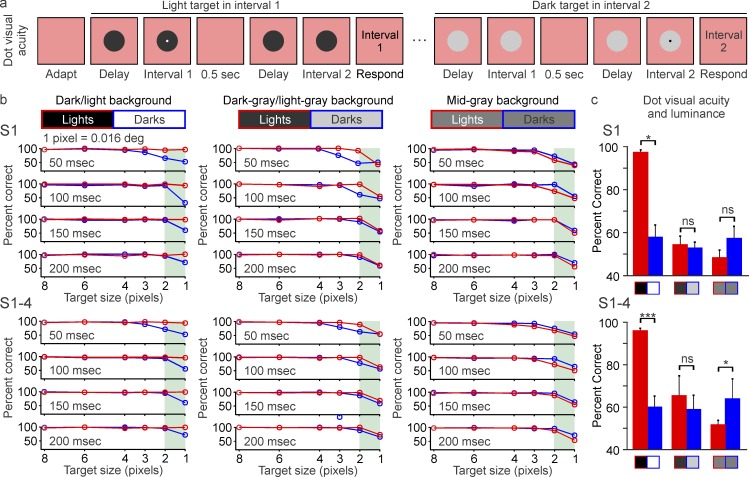Figure 8.
Dot visual acuity is higher for lights than darks, but only when lights are presented on dark backgrounds. (a) Subjects were asked to report the interval in which a small dot was presented. The small dot could be light or dark and could be presented on different backgrounds, with different sizes and durations. The intervals were separated by 500 ms and a variable delay that changed with the duration of the target. See videos of the stimuli. (b) Dot visual acuity measured in a single subject (top: S1) and the average of four subjects (bottom: S1–S4). The smallest dots (1 pixel, 0.016°, green shading) were seen better when they were light on dark backgrounds (red) than dark on light backgrounds (blue). This advantage for lights was reduced (middle) and reversed (right) as the background approached a midgray level. (c) Comparison of visual acuity measured with the smallest light and dark dots (1 pixel) on three different backgrounds for a single subject (top: S1) and the average of four subjects (bottom: S1–S4). *p < 0.05, ***p < 0.001, ns: not significant. Error bars show the standard error of the mean.

